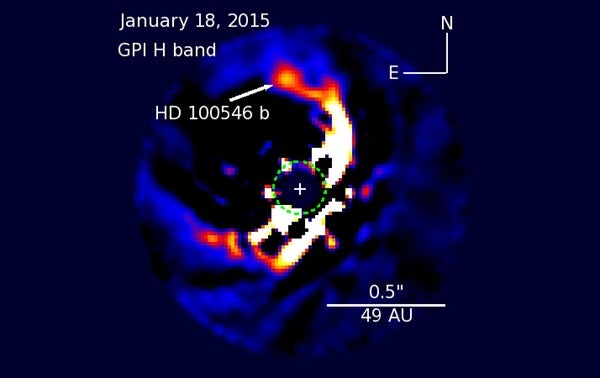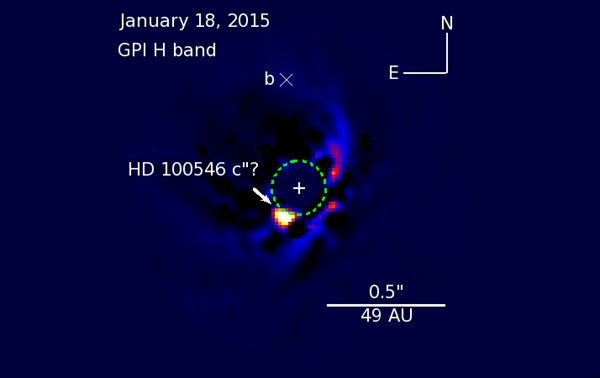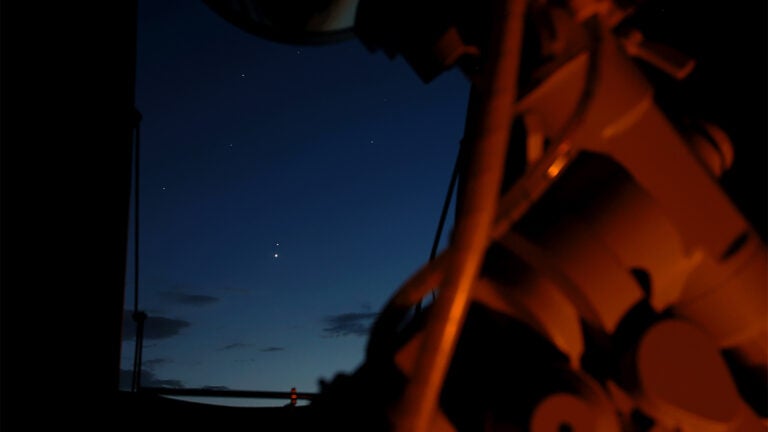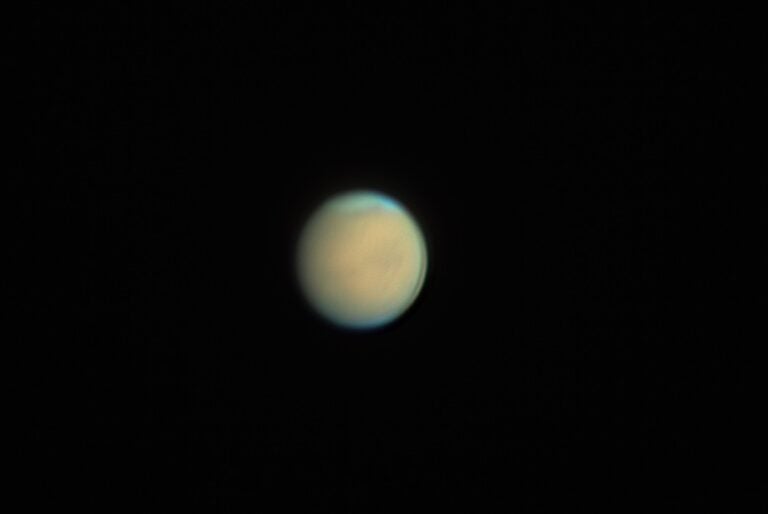Astronomers report that this system, surrounding a star known as HD 100546, is giving us a glimpse back in time to see what other more developed exoplanet systems looked like in their adolescence. The star is remarkably similar to HR 8799, the first multiple planet system directly imaged and discovered in 2008, but HR 8799’s planets are fully formed. “Now, seven years later, we can for the first time see what this planetary system may have looked like while the planets were just coming into existence,” said Thayne Currie from the Subaru Observatory in Hilo, Hawaii.
The unique set of data for this research, including high-contrast direct imaging, integral-field spectroscopy, and polarimetry, “really brought this system into focus — it’s remarkably powerful,” said Carol Grady from NASA’s Goddard Space Flight Center in Greenbelt, Maryland.
GPI is now in its second year of regular observations at the Gemini South telescope, and in addition to general observations for the astronomical community like those that produced this result, the ambitious Gemini Planet Imager Exoplanet Survey (GPIES) has over a year of observations completed.











